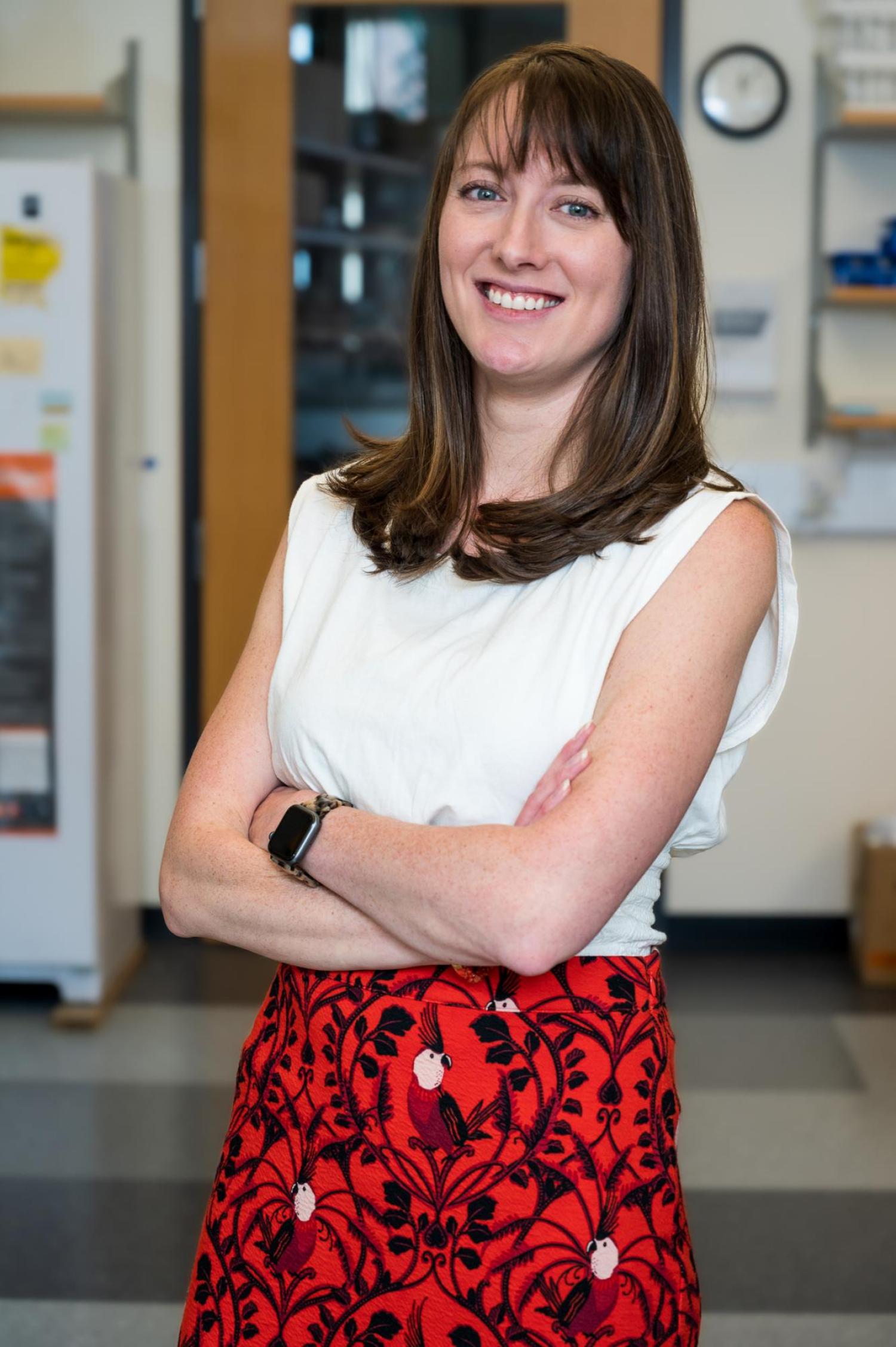Alexandra Whiteley
- Assistant Professor

Office: JSCBB B222
Lab: JSCBB B250
Education
PhD: Biomedical Sciences, Advisor: Jeoung Sook Shin, PhD. UCSF, 2008-2013
Postdoctoral Fellow: Immunology and Infectious Diseases, Advisor: Rick Brown, MD. Genentech, Inc., 2014-2016
Postdoctoral Fellow: Cell Biology, Advisor: Daniel Finley, PhD. Harvard Medical School, 2016-2019
Areas of Expertise
Cell Signaling, Gene Expression and Regulation, Proteomics, Neuroscience and Neurodegenerative Disease, and Proteins and Enzymology.
Awards and Honors
- 2021 CU Boulder Lab Venture Challenge Winner
- 2016 Hearst Fund Award for Brain Research, Harvard Medical School
- 2016 Cancer Research Institute (CRI) Irvington Postdoctoral Fellowship
- 2011 UCSF HHMI Graduate Education in Medical Sciences (GEMS) Training Program Fellowship
Understanding Ubiquilins: Facilitators of protein degradation
The ubiquitin-proteasome system is essential to eukaryotic life through the regulation of protein degradation. Ubiquilins (Ubqlns) facilitate proteasomal degradation of a poorly defined subset of proteins by physically linking the proteasome with protein bound for degradation. While the molecular mechanism of Ubqln function is unclear, they play an unmistakable role in maintaining human health. In particular, mutations in Ubqln2, which is highly expressed in neurons and muscle, were recently identified as the cause of an X-linked, dominant form of familial Amyotrophic Lateral Sclerosis (fALS).
My laboratory has focused on determining the so-called 'clients' of Ubqln2 in the context of ALS and how their accumulation contributes to disease. We have found that Ubqln2 regulates the abundance of a unique virus-like protein which changes gene expression when over expressed. In light of our research, many questions remain, including the biochemical properties of Ubqln client proteins, the uniqueness of different Ubqln genes, and the mechanism of disease caused by client buildup. My laboratory aims to address these crucial questions using unbiased, mass-spectrometry based proteomics paired with in vivo and cell biological methods.
See my NCBI bibliography for a full and up-to-date list
- Campodonico W, Black HH, Lau CI, Whiteley AM. The human gag-like gene RTL8 antagonizes PEG10 VLP release. BioRxiv [preprint] February 4, 2023 [cited April 3, 2023].
- Black HH*, Hanson JL*, Roberts JE, Leslie SN, Campodonico W, Ebmeier CE, Holling GA, Wei Tay J, Mathews AM, Ung E, Lau CI, Whiteley AM. UBQLN2 restrains the domesticated retrotransposon PEG10 to promote neuronal health in ALS. Elife. 2023; e79452.
- Whiteley AM*, Prado MA*, de Poot SAH, Paulo JA, Ashton M, Dominguez S, Weber M, Syzpyt J, Jedrychowski MP, Easton A, Gygi S, Kurz T, Monteiro MJ, Brown EJ, Finley D. Global proteomics of Ubqln2-based murine models of ALS. Journal of Biological Chemistry. 2021; 296: 100153.
- Wu, J.J., Cai, A., Greenslade, J.E., Higgins, N.R., Fan, C., Le, N.T.T., Tatman, M., Whiteley, A.M., Prado, M.A., Dieriks, B.V., Curtis, M.A., Chaw, C.E., Siddique, T., Faull, R.L.M., Scotter, E.L., Finley, D., Monteiro, M.J. (2020) ALS/FTD mutations in UBQLN2 impede autophagy by reducing autophagosome acidification through loss of function. PNAS Jun 8; online ahead of print.
- Whiteley, A.M., Prado, M.A., Peng, I., Abbas, A.R., Haley, B., Paulo, J.A., Reichelt, M., Katakam, A., Sagolla, M., Modrusan, Z., Lee, D-Y., Roose-Girma, M., Kirkpatrick, D. S., McKenzie, B.S., Gygi, S.P., Finley, D., Brown, E.J. (2017) Ubiquilin1 promotes antigen-receptor mediated proliferation by eliminating mislocalized mitochondrial proteins. eLife 6: e26435.
- Greer, A.M., Matthay, M.A., Kukreja, J., Bhakta, N.R., Nguyen, C.P., Wolters, P.M., Fahy, J.P., Woodruff, P., Fahy, J.V., Shin, Js. (2014) Accumulation of myeloid DCs in inflammatory diseases of the lung. PLoS One 9 (6):e99084.
- Greer, A.M., Wu, N., Putnam, A., Woodruff, P.W., Kinet, J.P., Shin, Js. (2014) FcεRI expressed in human dendritic cells and monocytes mediates cellular entry of circulating IgE contributing to serum IgE clearance. The Journal of Clinical Investigation 124 (3): 1187-1198.


